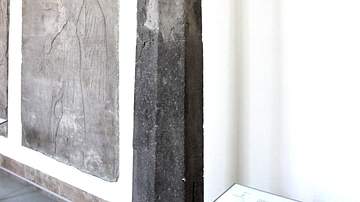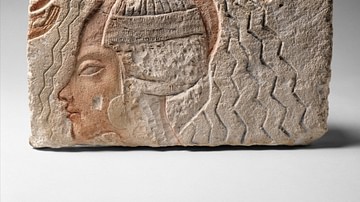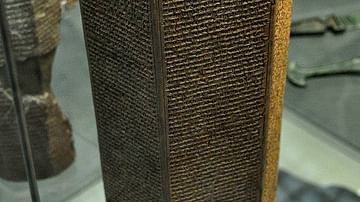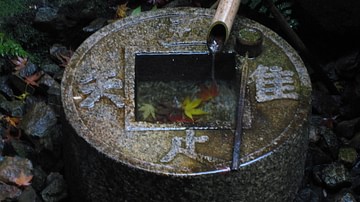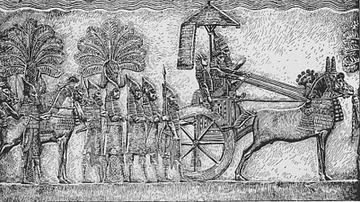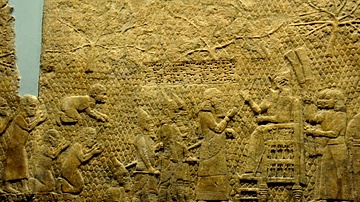Illustration
When discovered, this water basin was completely shattered. It was cut originally from a single basalt block and was located in the courtyard of the temple of Ashur. At each corner and side of the basin's walls, there are water gods holding water-flowing water jugs. Water flows from the sky above, into the jugs, and downward to the earth below. Two priests appear to wear fish skins and hold small buckets filled with a fluid to purify the water god at the center. There are several repeated cuneiform inscriptions that mention the name of the Assyrian king Sennacherib. The interior of the basin was not decorated. The basin's location and its decorations refer to the fact that this basin was used for cultic purification ceremonies. From Ashur, northern Mesopotamia, Iraq. Neo-Assyrian period, reign of Sennacherib, 704-681 BCE. (The Pergamon Museum, Berlin).
About the Author
Cite This Work
APA Style
Amin, O. S. M. (2014, August 31). Basalt basin for purification purposes from Ashur. World History Encyclopedia. Retrieved from https://www.worldhistory.org/image/2987/basalt-basin-for-purification-purposes-from-ashur/
Chicago Style
Amin, Osama Shukir Muhammed. "Basalt basin for purification purposes from Ashur." World History Encyclopedia. Last modified August 31, 2014. https://www.worldhistory.org/image/2987/basalt-basin-for-purification-purposes-from-ashur/.
MLA Style
Amin, Osama Shukir Muhammed. "Basalt basin for purification purposes from Ashur." World History Encyclopedia. World History Encyclopedia, 31 Aug 2014, https://www.worldhistory.org/image/2987/basalt-basin-for-purification-purposes-from-ashur/. Web. 16 Apr 2025.



